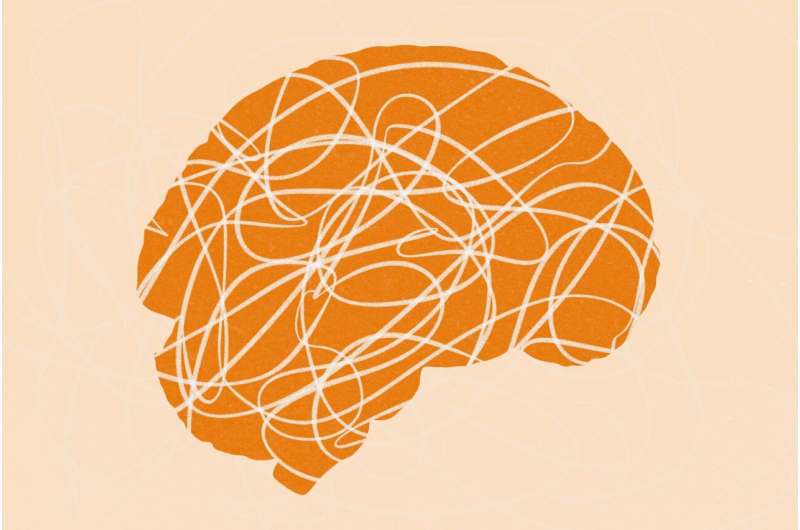This article has been reviewed according to Science X's editorial process and policies. Editors have highlighted the following attributes while ensuring the content's credibility:
fact-checked
peer-reviewed publication
trusted source
proofread
Alzheimer's discovery reveals dire effect of toxic tau protein

Alzheimer's disease researchers at the University of Virginia have discovered how harmful tau proteins damage the essential operating instructions for our brain cells, a finding that could lead to new treatments.
The researchers have published their findings in Alzheimer's & Dementia. The research team consisted of Xuehan Sun, Guillermo Eastman, Yu Shi, Subhi Saibaba, Ana K. Oliveira, John R. Lukens, Andrés Norambuena, Joseph A. Thompson, Michael D. Purdy, Kelly Dryden, Evelyn Pardo, James W. Mandell and Bloom.
The toxic tau protein, the researchers found, warps the shape of the nuclei of nerve cells, or neurons, altering the function of genes contained inside and reprogramming the cells to make more tau.
While the protein has long been a prime suspect in Alzheimer's and other neurodegenerative "tauopathies," the new research from UVA's George Bloom, his recently graduated doctoral student Xuehan Sun and collaborators is among the first to identify concrete physical harms that tau causes to neurons. These findings offer researchers exciting leads as they work to develop new treatments for Alzheimer's disease and tauopathies, which are now untreatable.
"A lot of fantastic research has been done by other labs to learn how toxic tau spreads from neuron to neuron in the brain, but very little is known about exactly how this toxic tau damages neurons, and that question is the motivation for our new paper," said Bloom, of UVA's Departments of Biology, Cell Biology and Neuroscience, as well as the UVA Brain Institute, the Virginia Alzheimer's Disease Center and UVA's Program in Fundamental Neuroscience.
"The toxic tau described here is actually released from neurons, so if we can figure out how to intercept it when it's floating around in the brain outside of neurons, using antibodies or other drugs, it might be possible to slow or halt progression of Alzheimer's disease and other tauopathies," he said.
Alzheimer's and tauopathies
Tauopathies are characterized by the buildup of tau inside the brain. Alzheimer's disease is a well-known tauopathy, but there are many others, including frontotemporal lobar degeneration, progressive supranuclear palsy and chronic traumatic encephalopathy. These diseases typically present as dementia, personality changes and/or movement problems.
There are no treatments available for non-Alzheimer's tauopathies and the UVA researchers were eager to better understand what is happening, so scientists can find ways to prevent or treat it.
Bloom and his team discovered that tau "oligomers"—assemblages of multiple tau proteins—can have dramatic effects on the normally smooth shape of neuronal nuclei. The oligomers cause the nuclei to fold in on themselves, or "invaginate," disrupting the genetic material contained within. The physical location and arrangement of genes affects how they work, so this unnatural rearrangement can have dire effects.
"Our discovery that tau oligomers alter the shape of the nucleus drove us to the next step—testing the idea that changes in gene expression are caused by the nuclear shape change," Bloom said. "That's exactly what we saw for many genes, and the biggest change is that the gene for tau itself increases its expression almost threefold. So bad tau might cause more bad tau to be made by neurons—that would be like a snowball rolling downhill."
The researchers found patients with Alzheimer's disease had twice as many invaginated nuclei as people without the condition. Increases were also seen in lab mice used as models of Alzheimer's and another tauopathy.
The researchers say additional research into how this process happens could open the door to new ways to prevent and treat Alzheimer's and other tauopathies.
More information: Xuehan Sun et al, Structural and functional damage to neuronal nuclei caused by extracellular tau oligomers, Alzheimer's & Dementia (2023). DOI: 10.1002/alz.13535





















